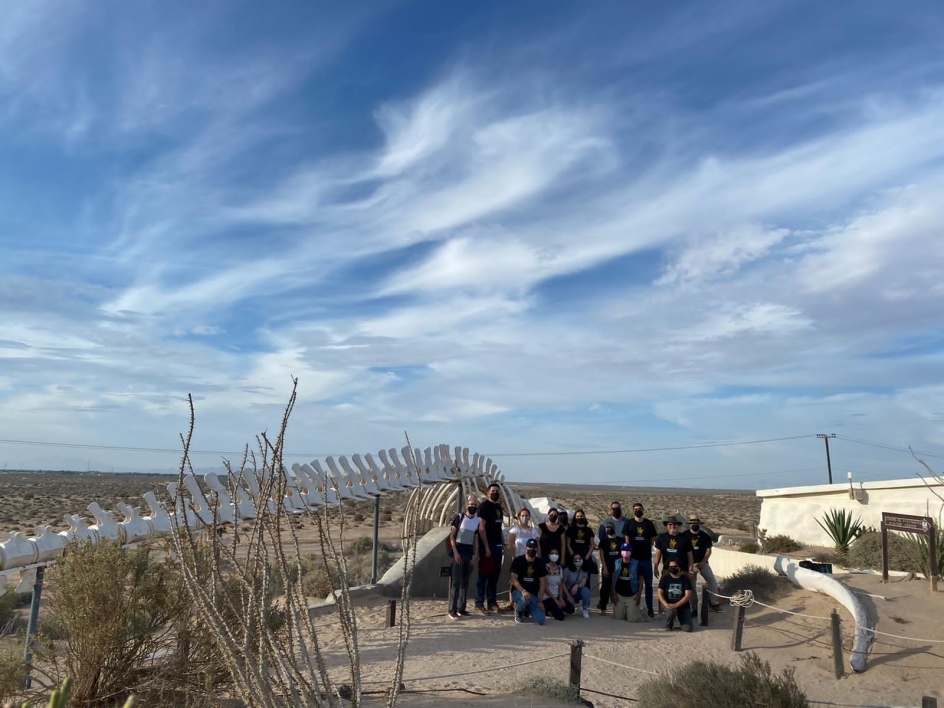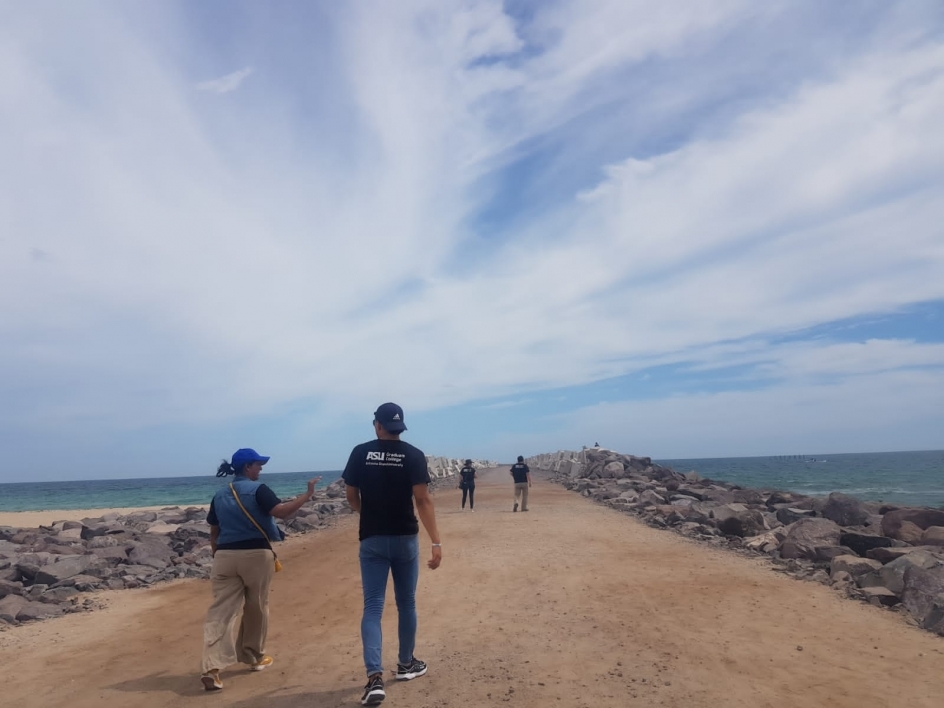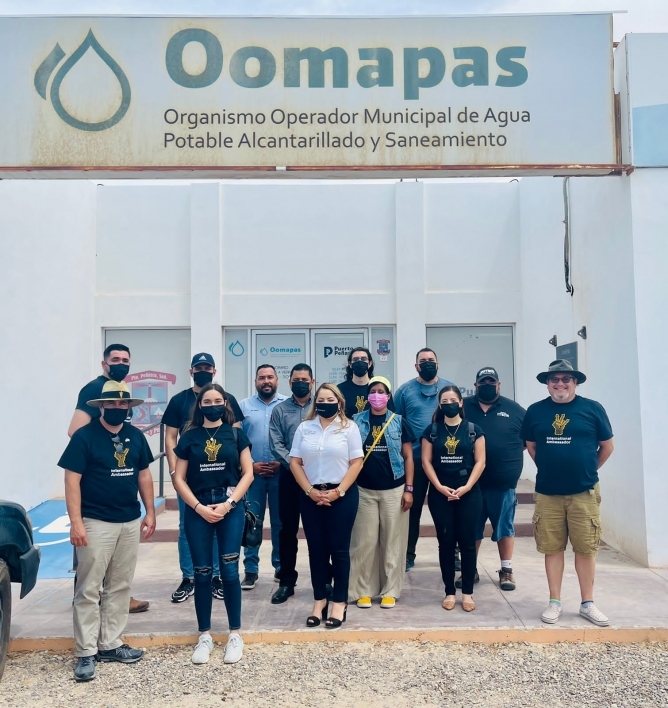ASU graduate students focus on sustainable agriculture in desert landscapes
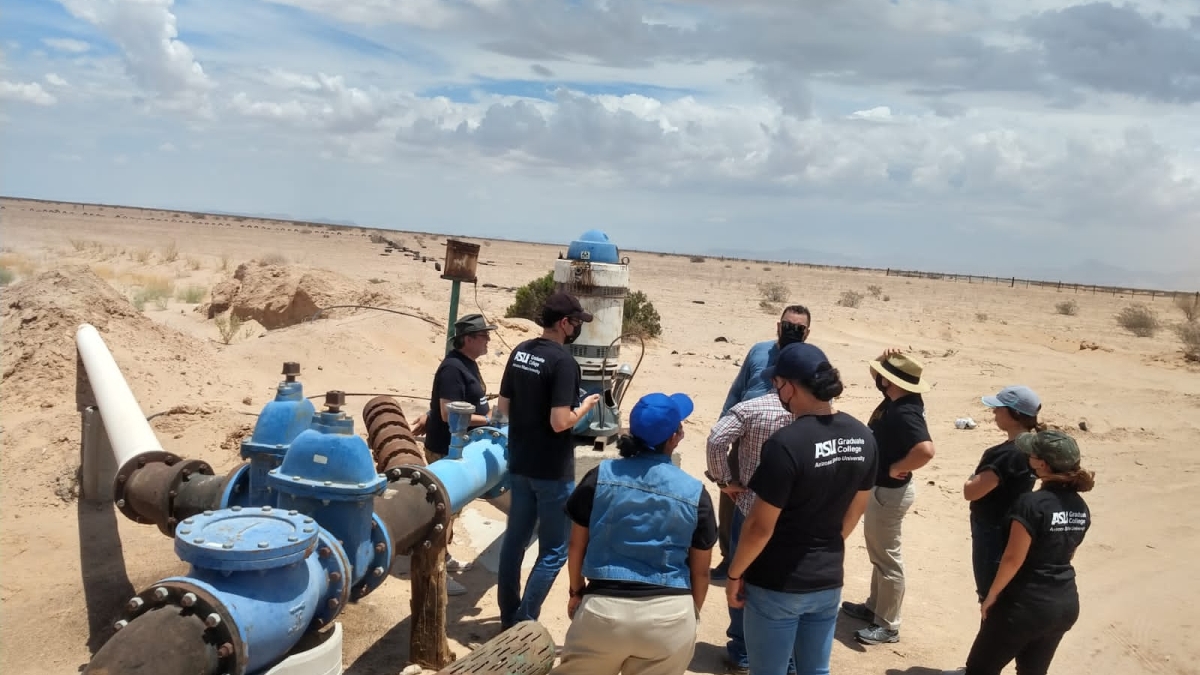
A binational group of students and faculty from U.S.-Mexico TEAM at a groundwater supply well in a large coastal desert valley that provides water for tourism, agricultural and domestic uses.
Arizona State University graduate students and faculty recently traveled to Puerto Peñasco, also known as Rocky Point, in Sonora, Mexico, to obtain real-world experience with water systems in the arid U.S.-Mexico border region as part of a TEAM grant, funded by the U.S. State Department.
The collaborative effort between ASU and the Instituto Tecnologico de Sonora (ITSON), is focused on sustainable agriculture in the desert landscapes of North America. The TEAM program and its curriculum are administered by the ASU Graduate College.
“We selected Puerto Peñasco as it is a growing urban and agricultural area in an arid region along the U.S.-Mexico border where water is an important resource," said Enrique Vivoni, a professor in both the School of Earth and Space Exploration and the School of Sustainable Engineering and the Built Environment at ASU, and the lead faculty member of this program. This provided the context for students and faculty to discuss how U.S.-Mexico science and engineering could help provide sustainable solutions that meet multiple objectives.”
This trip addressed four main themes: water management; municipal governance of natural resources and tourism development; ecological sites and preservation; and ecological tours of coastal and ocean systems.
Real-world experience
“The trip provided students and faculty from the U.S.-Mexico TEAM program with an opportunity to see real-world examples of how natural resources are managed in the binational Sonoran Desert,” Vivoni said.
While in Puerto Peñasco, students and faculty met with city officials to learn about the agricultural strategies and challenges of the area.
“Rocky Point is an interesting city because it is a coastal city for starters and one would think that they have a lot of water available for daily use but it turns out they don’t,” said Luisa Orci Fernandez, ASU graduate student and Sonora native.
During the trip, students and faculty toured water supply sources, water and wastewater treatment operations as well as ecological sites. Students and faculty were able to snorkel or scuba dive with sea lions at Isla San Jorge, an area protected by the Mexican federal government.
“Students and faculty then reflected upon the real-world examples in the broader context of sustainable development along the U.S.-Mexico border,” Vivoni said.
Promoting collaboration
In addition to learning, students were able to connect with one another for the first time in person.
In February, students formed four binational project teams researching the vulnerability of agricultural systems to drought, sustainable nitrogen fertilizer use, identification of crop water stress from satellites, and cultural differences in attitudes towards water. Each team consisted of students from both universities.
Students were also able to network professionally with one another while on this trip.
“I had the opportunity to learn what my classmates were doing with their thesis or research topics, and we realized that we all were working in similar fields so there was a great exchange of knowledge and experiences,” Fernandez said. She hopes there will be further collaboration in the future, following the end of the TEAM program.
Applying knowledge
The faculty and students who participated in this trip will be able to apply their knowledge and experiences to their work in this program and beyond.
“This experience will be leveraged in the U.S.-Mexico TEAM program to inform other locations that we are studying in the Sonora Desert in Arizona and Sonora,” Vivoni said.
Fernandez plans to apply this knowledge to both her TEAM project and her thesis, which is on runoff generation, surface water generated by sources like rainfall. She hopes to never forget this experience.
“The program will end in December — for us. But I hope there is another program for other people because I think it is a great experience,” Fernandez said.
About TEAM
The U.S.-Mexico Training in Environment, Agriculture and Management (TEAM) program is the result of a 100,000 Strong in the Americas Innovation Award, the U.S. Department of State’s signature hemispheric-wide initiative to champion the power of education to transform societies, provide opportunity and stimulate economic prosperity. The objective of the grant is to improve student competencies and provide real-world training for the future workforce in sustainable agriculture. This program is also funded by the Babbitt Center for Land and Water Policy.
Written by Jenna Nabors
More Environment and sustainability

Charles Redman, founder of the School of Sustainability, faces a new adventure: Retirement
At the retirement celebration for Charles Redman on Oct. 22, two messages persisted: Redman’s contributions to Arizona State…

10 climate insights to guide our future
A group of globally renowned social, natural and climate scientists has once again convened to offer their newest annual…
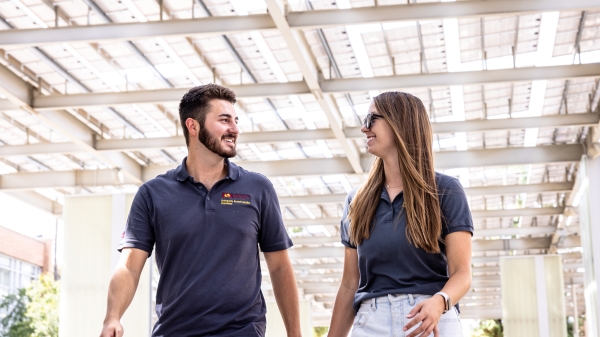
The future is green: Job demand translates to high employability for ASU sustainability grads
A 2023 report by Forbes on the state of green jobs confirmed what Arizona State University has been trumpeting for years:…
